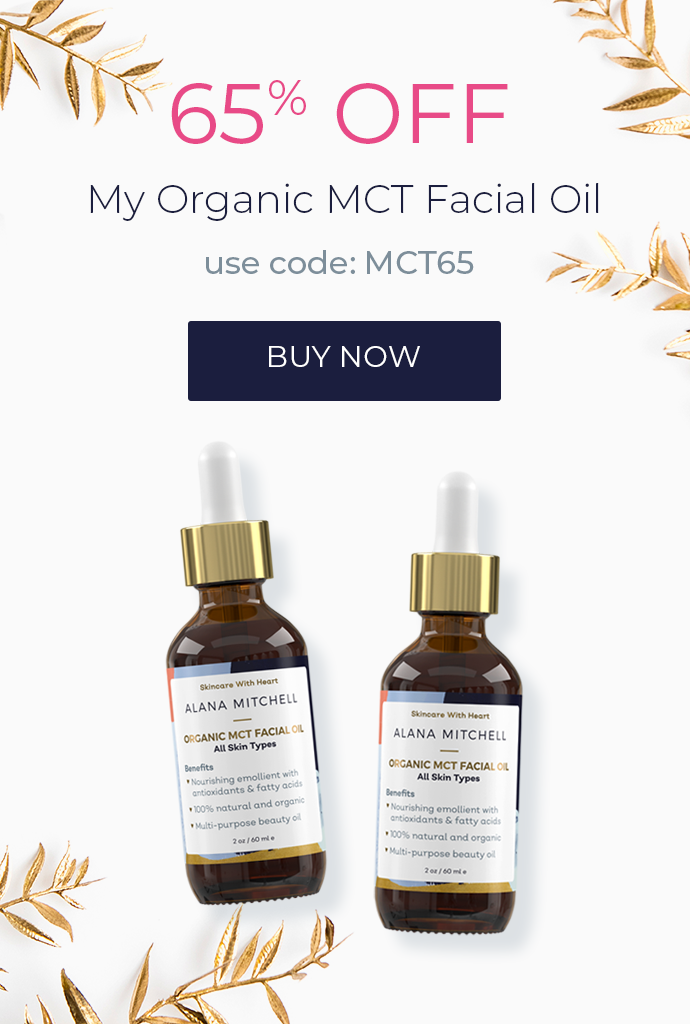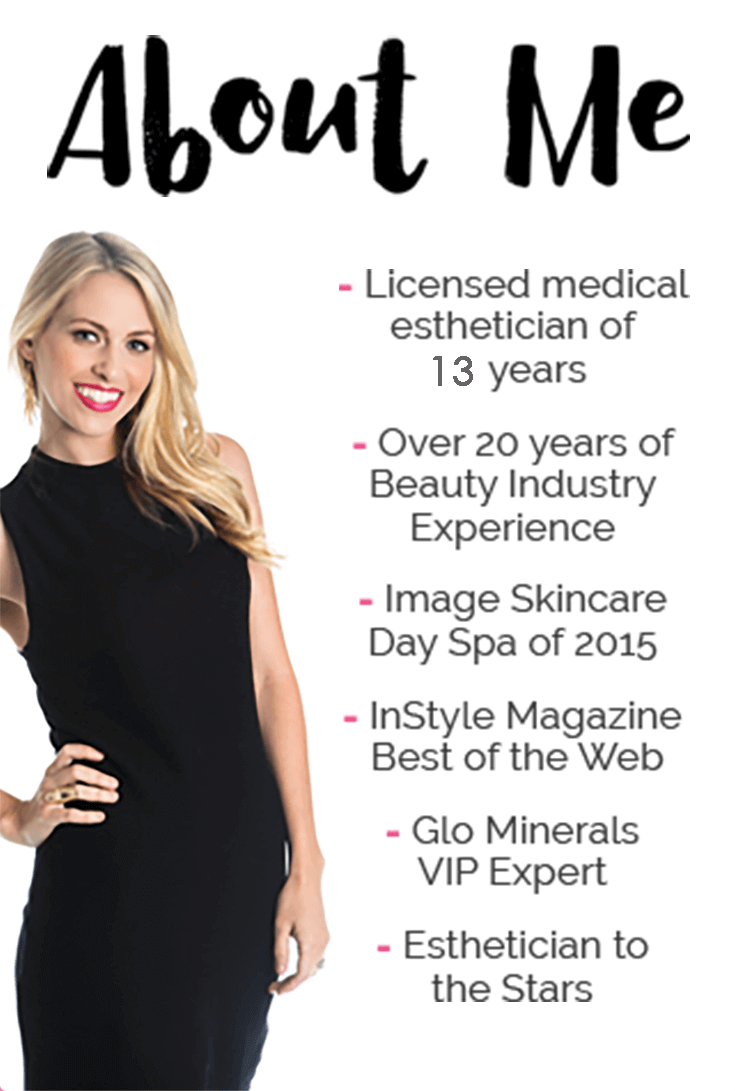What Should You Be Using In Your Skin Care Routine?
Take my quiz and get personalized recommendations from a
licensed esthetician!
Great Alternatives to Plastic Surgery: I'm Dishing Out the Details
The world of cosmetic procedures seems to get more complicated every day, with a huge array of options and new products exploding onto the scene.
There’s a good deal of conflicting information and pseudoscience out there.
Need help navigating the maze of fillers, Botox, and other injectables and figuring out what works for you?
I’ve got you covered.

It’s no wonder injectables get so much attention.
The other reason for all the buzz is that, for the most part, those who are using injectables are loving the results.
Patient satisfaction with treatments such as Botox has been consistently high for years, in the over 80% range.
If you’ve considered trying them, but haven’t taken the plunge yet, you probably have plenty of questions.
Are they safe? Is it just a short-term fix with undesirable effects in the long run?
The last thing you want is a treatment that makes you look and feel younger now, only to cause your skin to age faster overall.
Or to put a band-aid on an annoying issue now, only to make it worse in the long run.
If you have tried them, you may be wondering if the option you’ve chosen is the best one for your skin.
As a skincare professional, I’m here to get you up to speed on the ins-and-outs of injectable cosmetic procedures and answer the questions I hear most often.
We’ll also take a look at the big picture as it relates to effects on your skin in the long run.
Let’s get to your questions.

How Do They Work? And, What Are My Options?
Injectables are formulas injected under the skin for the purpose of altering the behavior or make-up of the underlying structures of the skin and therefore altering its appearance.
These are the four basic categories of injectables and each one works differently:
- Fillers - they plump the skin, fill in underlying cracks, and erase lines.
These use ingredients such as hyaluronic acid, which has the ability to hold up to 100 times its own weight in water.
When injected under the skin through brands such as Juvederm and Restylane, they work to plump the skin and restore a more youthful look.
This substance actually fills the space between collagen and elastin fibers and in some cases also stimulates collagen production.
- Bio-stimulators - they boost collagen production which in turn reduces lines and different types of wrinkles.
This type of filler, such as the brand Sculptra Aesthetic, works to plump areas such as hollows under the eyes and cheeks or thin lips with a two-fold effect.
It fills the area while causing an immune response that increases collagen production in the area.
The treatments are spaced out over several months but generally last for 1 ½ to 2 years.
- Neuromodulators - they freeze musculature and prevent wrinkles.
These injectables, which include the brands Botox, Dysport, and Xeomin, are de-nerving agents that temporarily block nerve receptors in facial (and other) muscles.
They have many medical uses, but cosmetically they help treat and prevent expression-caused lines and wrinkles.
Botox was the first of these to be FDA approved for cosmetic use in 2002.
Due to their actions on nerves, these treatments carry the greatest risk of all the injectables.
- Fat modulators - they smooth lumps and bumps by dissolving fatty tissues.
Instead of cutting the face or sucking out the fat, injectables such as Kybella cause fat cells to burst and become reabsorbed by the body.
This five-minute treatment uses a type of deoxycholic acid that occurs naturally in the body and has been FDA-approved for the chin area.
The above procedures have many of the same goals as plastic surgery, but are minimally invasive and much safer (and less costly), which is one of the reasons they’re so popular.

What Do I Need to Know?
The most important thing to know from my perspective, beauties, is this – your face, your choice.
So, I want to address a question that sometimes goes unasked.
Should I work harder to love myself the way I am or just make a change?
No one can tell you what is right in this area, and no one should try.
Are you beautiful just the way you are? Yes!
Are our imperfections a perfect part of who we are? Absolutely.
Is it OK to want to make a change, go for younger looking skin, or to alter your appearance in a way that makes you feel fabulous?
I say it is!
The pressure to be different or reach some unattainable level of perfection is harmful.
But, the desire to make changes that boost our confidence or help us to feel our best is perfectly understandable.
The real answer to the question above lies in another question – how can you best approach your appearance with love instead of criticism, and what helps you do that?
Love or hate cosmetic alterations or procedures, you know what works for you and you can trust that.
With that said, here are some facts to know and consider.
- Fillers with longer lasting effects are more likely to cause side-effects.
Nothing prevents wrinkles completely, of course, and most of the injectable procedures have short-term effects – expect a few to 6 months.
Those with effects of over a year to sometimes two years will most likely have a riskier side to consider and be aware of.
That’s not to rule them out, just to do your research, stay informed, and know what to expect.
On the flip side, many of the short-term fixes are super-quick procedures that require virtually no recovery time.
- For safety, think of these as a medical cosmetic procedure, not strictly a cosmetic procedure.
If it sounds like semantics, it’s not.
With the explosion of injectable products and offerings comes the risk of viewing them in an overly casual way.
I encourage you to resist this temptation and be mindful of the setting where procedures are offered.
Keep your standards high at all times, no matter the procedure, and be sure that you’re fully aware of the name of the product and its ingredients.
Do your research ahead of time, and always check for the proper licenses and certifications.
- Sunscreen used daily afterward can help reduce some of the peskier side-effects.
I’ll never miss an opportunity to remind you that sun damage is a huge contributor to wrinkles.
Stay sun safe!
And, take care not to erase the youthful effects of fillers and injectables by being careless about sunscreen.

Where Can I Get This Done?
There are two places I would advise you to go for any of the above injectable procedures.
One is a board-certified physician’s office.
Most dermatologists and ophthalmologists offer Botox treatments, for instance.
The other is a facility, such as a medi-spa, which operates under the supervision of a medical physician.
Remember that I mentioned how quick some of these procedures can be? And how sometimes little to no recovery time is needed?
It’s true, depending on the procedure you choose.
But, that doesn’t change the fact that all of these procedures involve irrevocably injecting substances into your face, under your skin.
Remember my advice to avoid the temptation to get too casual, and always go to the most reputable facility under the care of people you trust.
The American Board of Medical Specialties has great resources for finding and verifying the credentials of anyone offering injectable procedures and their supervisors.

What Results Can I Expect?
In the case of Botox or other neuromodulators, you should see a noticeable effect on dynamic wrinkles near the site of the injections.
These procedures relax the muscles at the site and keep them from moving temporarily.
The procedure is quick, and you’ll see results within two weeks.
Note that the results are strictly related to movement-caused wrinkles such as smile or brow lines.
This type of procedure has no effect on fine lines and other wrinkles related to the breakdown of collagen or absence of hyaluronic acid.
With dermal fillers, you can expect the results to last anywhere from a few months to 2 years.
Formulas using poly-L-lactic acid will fall on the long-term end of that scale, while formulas using injectable collagen fall on the short-term end.
These procedures plump the area around the injection.
Results vary, from filling in the creases caused by smile lines, to repairing fine lines and crepe-like effects caused by loss of moisture-retaining molecules and collagen.
Are They Safe?
Once again, I’ll encourage you to do your research on individual brands.
Having said that, many fillers and injectables by now have a well-established track record of being both safe and effective.
Be sure to ask your doctor plenty of questions, and carefully match the product you use with the exact results you’re after.
Overall, these products are safer than plastic surgery, producing similar results and at a fraction of the cost.
With today’s products, there isn’t evidence at this time of any of the long-term complications that once were associated with cosmetic injections.
It’s a good indicator that many of the substances used today are handled by the body naturally already.
The margin of error when a needle is involved is always a concern, and in May 2015 the FDA issued serious warnings about the dangers of fillers accidentally injected into the blood vessels of the face.
Hopefully, you see the importance of proceeding with a trustworthy, reputable, and experienced professional so you’ll have the peace of mind that you’re in good hands.
Side-effects to be aware of will range from allergic reactions to bumps beneath the skin.
If you have a history of skin sensitivity or allergies, your doctor may perform a test before-hand to minimize your risk of a reaction.
Keep in mind that side effects of naturally occurring substances such as collagen or hyaluronic acid are rare.
When it comes to medical cosmetic procedures that treat wrinkles, these are the safest available (which by no means indicates zero risks).

How Long Have They Been Around?
Injecting chemicals into the face is, somewhat surprisingly, nothing new!
These procedures have technically been around since the late 1800’s, shortly after the invention of the syringe.
A hollow needle came on the scene in 1844.
Years later, around 1853, a couple of surgeons in Europe invented the hypodermic needle and syringe.
Unfortunately, it’s been a bit of trial and error when it comes to facial injections, and the results haven’t always been what they are today.
Some of the more problematic substances injected were paraffin in the early days, which tended to not stay in place for long, and then much later, silicone, which was eventually banned for similar reasons.
Liquid purified silicone is now approved by the FDA for injection in some cases, but its use remains controversial.
Bovine collagen (yep, that’s from cows) later became the first substance to be approved by the FDA for cosmetic injection.
It was marketed under the name Zyderm, and its effects lasted for 2-3 months.
This product required allergy testing prior to the procedure.
The bovine collagen injection was approved in 1981, and Botox followed about 20 years later.
Since then, dozens of injectable filling agents have become popular and proven their effectiveness.
Final Thoughts
Injectable fillers and Botox are popular for good reason.
The procedures are quick, the effects are often impressive, and the track records for safety and client satisfaction are well-established.
Who doesn’t want plumper, fuller skin?
And we all would love to turn back the clock on lines and wrinkles!
At least in the short-term (4 months are the average), these products fit the bill.
When it comes to your skin, my goal is that you have the best information available, that you know you’re perfect exactly the way you are, and that you make the decision when it comes to your own appearance.
Injectables and fillers are one of many options you have for a fresh and youthful look - if that’s your preference.
Know the different options you have and always be sure you’re matching the procedure or product you use with your ultimate intended result.
My best advice is to treat any cosmetic procedure involving an injection into the skin as the medical procedure that it is.
Your health and safety come first!
To me, that means doing your research on brands and making sound and wise decisions about the person you work with and the facility where the procedure is performed.
Don’t trust your skin or your health to just anyone, lovelies.
The advances in science in technology continue at lightning speed.
The effects possible with injectable procedures today were unthought of just a few years ago.
I can’t wait to see what comes next at the crossroads of science and beauty!
Beauties, any questions you have about fillers and injectables that weren’t answered here? Hit me up in the comments below, and I’ll do my best to answer them.
3 comments
I found it interesting that you state that a medical professional should perform all of your procedures. My wife has been wanting to find a way to get rid of some of the wrinkles that are starting to form on her face. I will send her this information so she can look for a cosmetic clinic to go to.
Hi, Patti! Thank you so much for reading!
Thank you for an excellent, informative, unbiased report! Not to mention your jovial anecdotes!
















